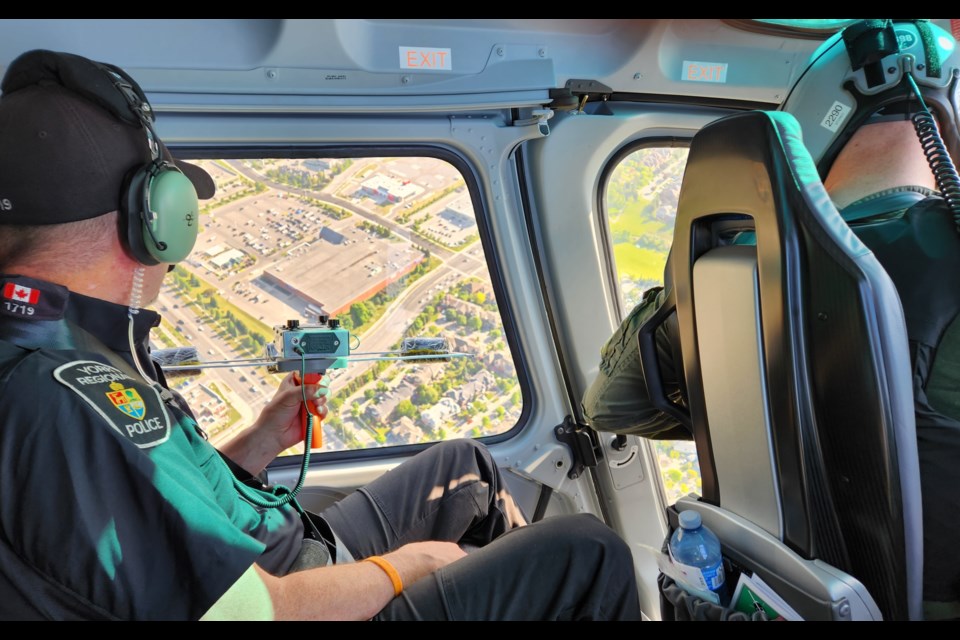The training York Regional Police Cst. Pete Gerulath received last spring from North Bay's Stan French, the president of BAYSAR, paid off on April 10, when a missing Markham, Ont., man wearing a Project Lifesaver transmitter was located in northeast Toronto with the help of Gerulath and crew in Air2, the York Regional Police helicopter.
See related: This Project Lifesaver technology helps protect vulnerable loved ones who wander
Using a Project Lifesaver tracking device tuned in to the frequency of the missing man’s transmitter, Gerulath, from the helicopter, was able to home in on the transmitter’s signal from 1,000 feet up and provide supporting ground teams with the location.
Video of the rescue shows the final moments in which a moving bus is identified as the probable location of the missing person and the elation experienced by the
officers during the successful rescue. You can also hear one of the search officers say, “No way that could have been done without this helicopter.”
Video courtesy York Regional Police
Project Lifesaver clients, including seniors with dementia and youth with autism, are outfitted with a small radio transmitter that can be worn on the wrist or ankle. They transmit a unique radio frequency pulse every second of every day. The frequency and matching vulnerable person information is catalogued in police databases. The transmitters are designed to withstand daily wear and tear and are waterproof so clients can bathe and swim without removing them.
French, in recognition of his contribution, received news of the successful search and rescue from the York Regional Police Search and Rescue team, as well as Project Lifesaver International.
“This is exactly the way that air support for Project Lifesaver is supposed to work; and a perfect example of a well-coordinated air and ground SAR mission.
It was successful despite the fact that the missing person was mobile on public transit; making this one of the most difficult scenarios for searchers.”
See also: Lost 'vulnerable' child rescued from the cold with help from Project Lifesaver
During a police news conference on April 12, Cst. Gerulath stated, “Normally these [Project Lifesaver] calls are resolved quite quickly on the ground, with members in police vehicles or on foot. But the fact that this gentleman had entered on the transit, and travelled a significant portion away, traditional ground search methods wouldn't have been successful.”
BAYSAR Air Search and Rescue became a leader in airborne Project Lifesaver search techniques in 2022 when it adapted the existing U.S.-based course for local use with fixed-wing aircraft and helicopters. Thanks to a grant from the Ontario Solicitor General facilitated by Nipissing MPP Vic Fedeli, the cost of aircraft operation for course development was covered. “That was a big factor in taking our course from concept to reality,” observed French.
The BAYSAR Project Lifesaver program has grown beyond all expectations since its launch in 2020. Market research at the time estimated that BAYSAR would service a maximum of 30 clients. Lately, BAYSAR has peaked at 40 clients, double the number from just two years ago.
If anyone has a family member you think would benefit from Project Lifesaver in the areas patrolled by the North Bay Police Service, North Bay OPP, or the Nipissing West OPP, a referral can come through the Alzheimer Society, One Kids Place, or contact BAYSAR at 705-477-3713 or email [email protected].



